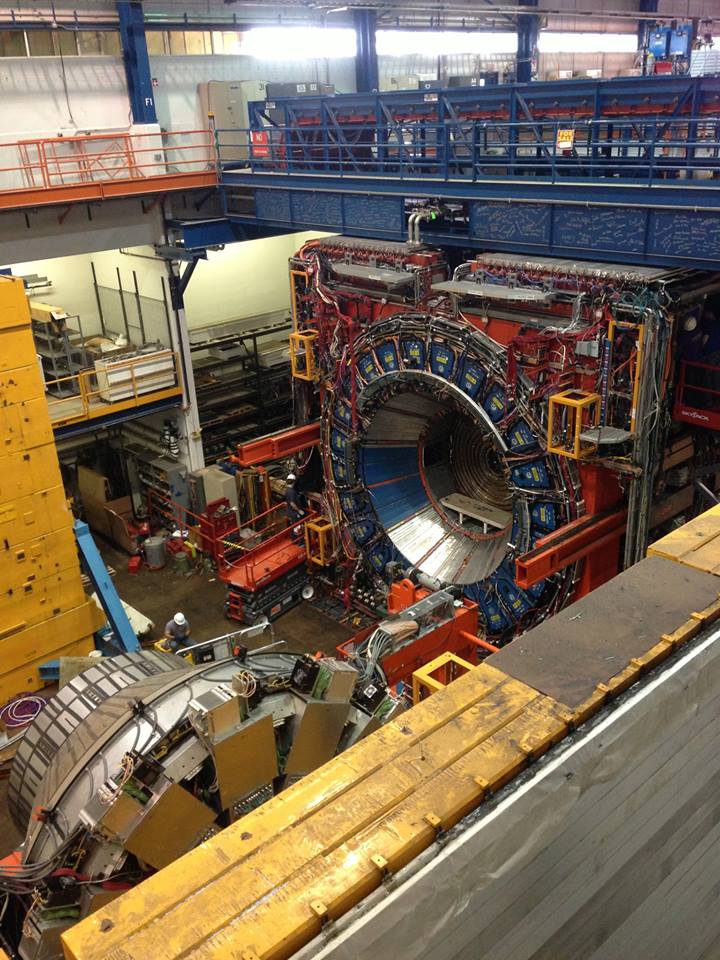Like most particle collider detectors, CDF is - oh well, was - built in layers like an onion: layers of the most sensitive detector elements, made of silicon wafers, surround the interaction point at few inches distance from the beam line, and accomplish the task of tracking all charged particles as they exit the collision point; this allows physicists to determine with high precision whether these particles originated from the collision or from the subsequent decay of unstable particles produced there.
The silicon detector is surrounded by a bigger, cylindrical gas chamber where the curved trajectory of charged particles in the strong magnetic field (provided by a solenoid which surrounds the gas chamber) is measured with precision, allowing the determination of their momentum.
Outside of the solenoidal magnet stand the calorimeters: these are built with layers of high-density material (lead, and then iron) alternated with scintillating plastic sheets. Here the energy of both charged and neutral particles can be determined by having them hit heavy nuclei, creating showers of secondary bodies whose number is directly proportional to the energy of the incident particle.
Finally, the calorimeters themselves are surrounded by another set of layers of gas chambers, where muons ionize the gas and can be detected in a zone where all other particles have been stopped by the dense material.
In the pictures below, courtesy Manuel Mussini, you can see the central detector being disassembled piece by piece. The inner silicon detector requires to be extracted from the gas chamber with special care - the two devices are only few millimeters apart; the outer calorimeter is instead built in sections called wedges. Another picture shows one of the many crates that get filled with the countless custom-made electronic boards which were the brain of the data acquisition system of CDF.



As I look at these pictures I cannot help feeling a bit sad. This was an incredibly complex system, which took many years to be designed, built, and operated. Hundreds of physicists have contributed to this endeavour, and for many of them this is probably the most relevant contribution to science they can boast about.
The detector was conceived at the end of the seventies, constructed in the early eighties, took first data in 1985, had a Run 0 with 1.8 TeV protons in 1987/88, then was equipped with a state-of-the-art silicon detector in 1991 and took the data which allowed the top quark discovery in 1992/93. After more running in 1995/96 it was partly refurbished and started data taking again in 2001 at the higher collision energy of 1.96 TeV. In the course of the following ten years it acquired 10 inverse femtobarns of proton/antiproton collisions, and with that mass of data the CDF collaboration produced hundreds of groundbreaking new measurements and discoveries.
You well understand that those who have worked at this project during these thirty years cannot but feel proud about it; and very sad now that the detector is finally disassembled. I am not among those who have been around for the whole lifetime of the detector, but I joined the collaboration over 20 years ago nonetheless, so I share some of those feelings...
Hooray to CDF !





Comments